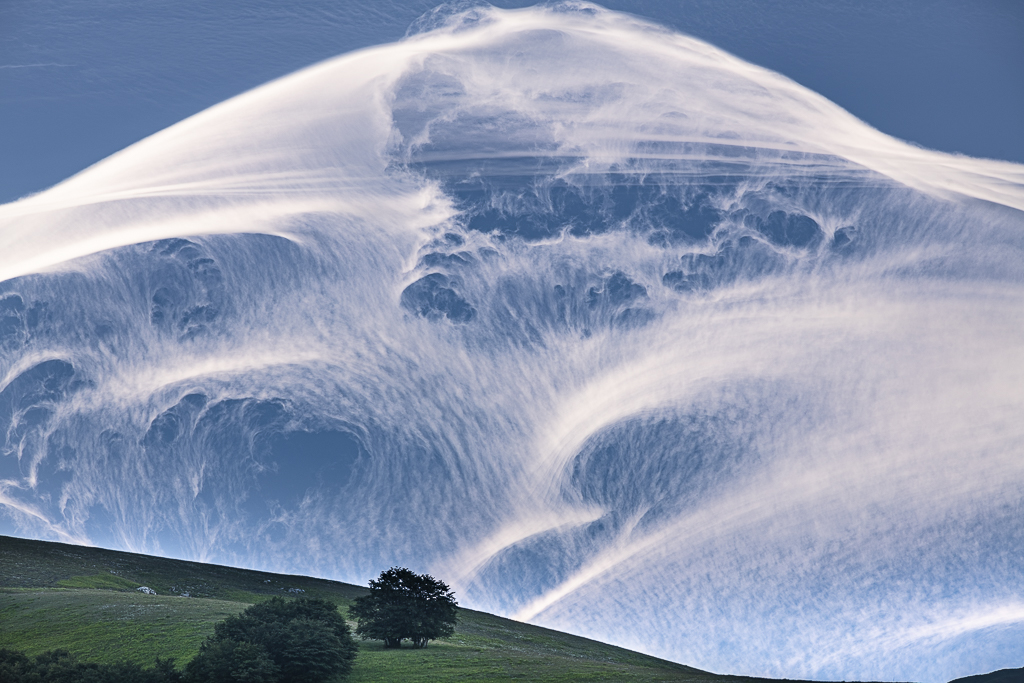It all started before dawn with a cloud, a thin fiery red stripe suspended above the sharp and very high profile of the Cresta del Redentore, a kind of light hat set against the top of the mountain.
Over time, impalpable veils began to circle for hours over the high Sibilla Mountains ridges. Ethereal and imaginative shapes materialized out of nowhere, they were long sinuous waves that intertwined, silhouettes of torn sails, or disturbing faces of terrible monsters, such as those that at night populate the minds of children and frighten them.
From Mount Vettore the winds at high altitude moved the clouds towards north-east, closely following the high profiles of the mountains and making them constantly change shape. The hypnotic spectacle of the creation of these diaphanous arabesques enchanted.
The clouds know how to condition our mood: the dark and looming clouds of thunderstorms inspire fear, while the white ones of a clear sky dispense good humor and happiness. I have always thought that clouds correspond to our thoughts, perhaps they are their natural representation.
The ones I was observing had a special character, never seen so spectacular in so many years of observing nature. When I asked an expert for information (thanks Filippo), everything became clearer: they are lenticular high mounds, which form in stable atmospheric conditions: that day currents from the southwest collided with the powerful Sibillini chain and the result of this collision were oscillations of the atmospheric columns, responsible for the formation of those particular clouds.
Yeah, but poetry? Where does the poetry go after the cold scientific explanation? It remains unchanged as far as I’m concerned. Proof of this is the lasting emotion I felt that morning while I was focused on the show, excited like a child on Christmas Day.

